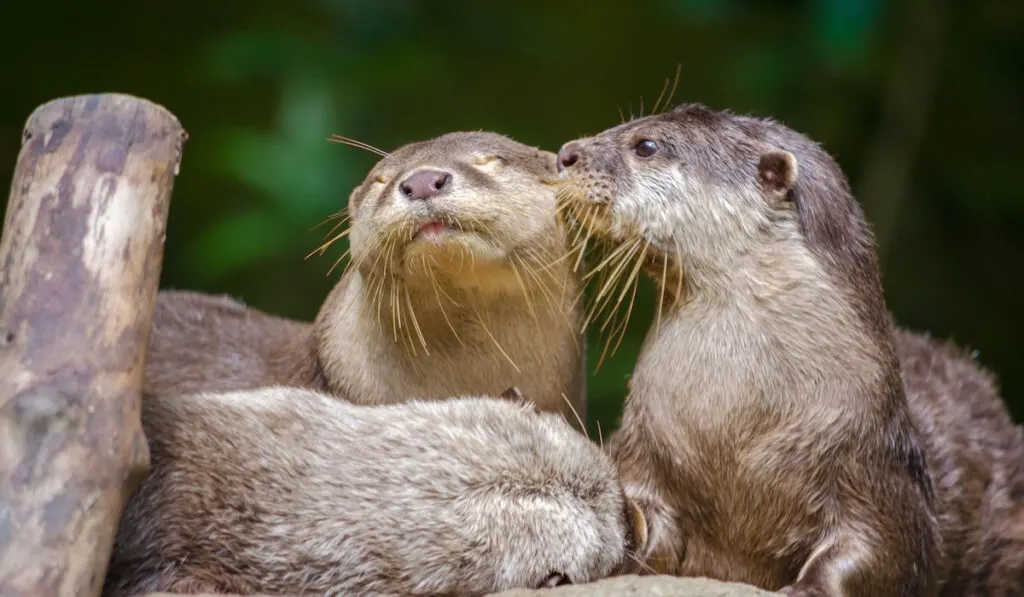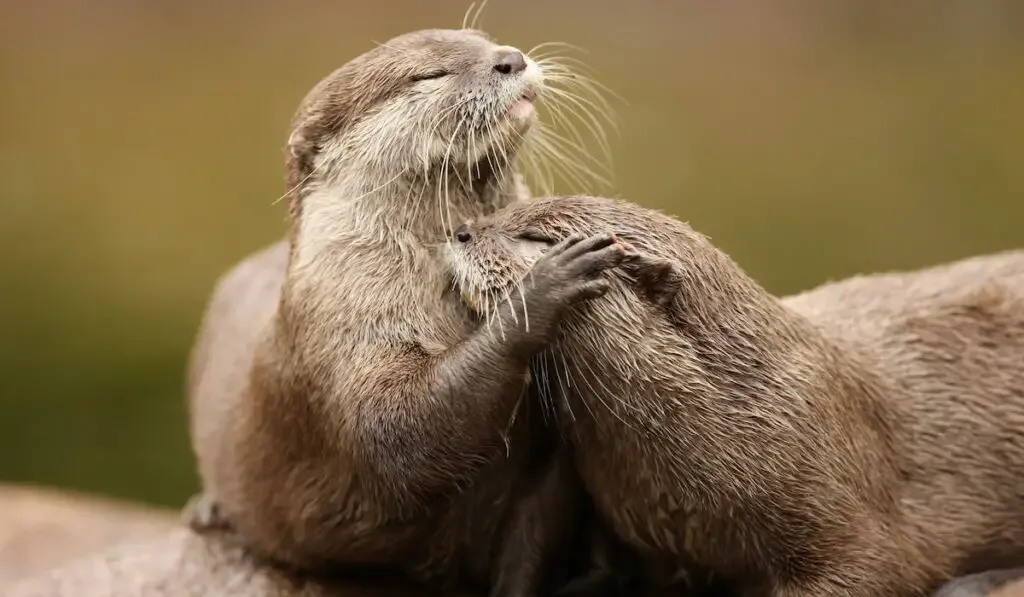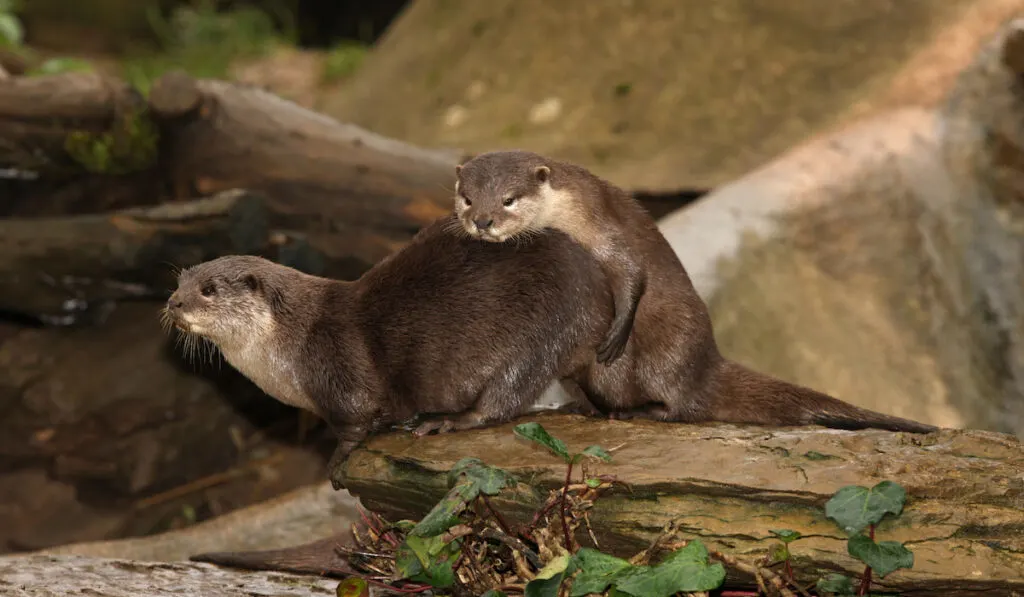Otters, which can be found on every continent except Antarctica and Australia, are members of the weasel family.
They are small and charismatic, with elongated bodies, short noses and ears, soft fur, and long tails.
The animal kingdom is undeniably diverse. In it, you’ll find animals that stick with their breeding partners for life.
You’ll also find animals that get a new partner every breeding season. So, it’s no surprise that you may be curious if otters mate for life.

So, do otters mate for life?
Yes, some species of otters do mate for life.
Monogamy is common amongst River otter species, and most of them mate for life.
Interestingly, Congo Clawless Otters are monogamous but they do not mate for life.
Then there’s the Sea Otters and a few other species, which are typically polygamous and do not mate for life.
There are 13 distinct species of otters ranging from the giant otter to the marine otter.
This article should shed some light on their mating patterns. We will also look at the relationship and bonding behaviors of otters.
Table of Contents
Polygamous or Monogamous?
As we already mentioned, most species of otters mate for life. Only a few species like the Sea Otter have multiple partners and do not mate for life.
The North American River Otter, for instance, is polygamous. This otter will mate with multiple partners throughout its lifetime.
The males will mate with a female and leave to mate with other females leaving the female otter to raise the pup.
The family unit of this otter usually consists of just the mother and her pup.
Some adult otters, presumably female, have been spotted helping mother otters with their pups.
Do Otters Bond?
Yes, otters bond. In some species of otters, the bonds become stronger as they play together.
Giant otters are commonly found in groups of 4 to 8 individuals. At the same time, they show a high level of cohesiveness and pair bonding.
Two adults with one or more juveniles and a sub-adult constitute the social group of a giant otter.

Male and female River Otters create separate hierarchies and cannot be seen accompanying each other.
The male otter with the highest rank controls the best ranges. Sometimes a female and her pup will claim dominance over a male otter.
Spot-Necked Otters are seen in groups of six, and sometimes as many as twenty individuals.
In East Africa’s Lake Victoria, these otters typically undergo a dispersal and aggregation cycle.
During this cycle, male and female otters form separate groups.
A female group can consist of 8 to 20 animals, which become smaller when the mating season arrives.
The Clawless Otters form a clan-type social group. Groups of related individuals come together and help defend joint territories.
In such groups, male otters may not maintain a close association with females and their pups.
Sea Otters live basically solitary lives. However, in Alaska, they are seen in large groups totaling around 2,000 individuals.
Male and female Sea Otters stay in separate areas of the coastline. They are only seen together during the mating season.
What Is the Difference Between Monogamous and Polygamous?
Monogamy is a type of relationship where an individual has only one partner at a time.
When applied to animal social behavior, this term is used to describe the state of having only one mate at any given time.
It could be short-term, a few seasons, long-term, or a lifetime.
Monogamy is more common amongst birds than other animals. Over 90% of birds are monogamous, and some are particularly affectionate.
Polygamy is a type of relationship where an individual has multiple spouses at a time.
For animals, this means having multiple partners to mate with. Polygamy is a common practice in animals.

Monogamous/Polygamous Otters and Gestational Periods of Each
The table below shows the type of relationship formed by each otter. The table also shows the different gestation periods for the otters.
| Types of otters | Type of sexual/ mating relationship | Gestation period |
| Eurasian Otter | Monogamous | 60-64 days |
| Hairy-Nosed Otter | Monogamous | About two months |
| Spotted-Necked Otter | Monogamous | two months |
| Smooth-Coated Otter | Monogamous | 60-63 days |
| North American River Otter | Polygamous | 58 days |
| South American River Otter | Monogamous | 65-70 days |
| Neotropical River Otter | Polygamous | 56 days |
| Marine Otter | Monogamous | 60-70 days |
| Giant Otter | Monogamous | 65-70 days |
| Asian Small-Clawed Otter | Monogamous | 68-72 days |
| African Clawless Otter | Monogamous | 63 days |
| Congo Clawless Otter | Monogamous | 60-64 days |
| Sea Otter | Polygamous | 4-9 months or an average of 6 months |
How Many Pups Does an Otter Usually Have?
Most freshwater otters give birth to one litter every year. The Asian Small-Clawed and Eurasian Otters can deliver two litters in a year.
Freshwater otters can have 1-3 pups in their litter. Giant and River Otter litters contain as many as five pups. Asian Small-Clawed Otters can have six pups in a litter.
Sea Otters can give birth every year, with longer birth intervals in females. They typically only birth a single offspring.
According to researchers, only about 2% of Sea Otter births produce multiple offspring and the mothers usually only care for one pup successfully.
Fun Facts About Otters’ Mating Practices and Gestation
The North American Marine, Smooth and Spot-Necked, and Marine Otters have displayed delayed implantation for as long as 10 months.
When the fertilized egg reaches the blastocyst stage, development stops, and it floats in the uterus.
Several months later, the blastocyst is implanted in the uterine wall, where it continues developing. The development process takes just 2 months.
This delayed implantation means the pup will be born when the environmental condition is suitable for it to survive.
It also gives the mother time to recover from her last pregnancy.
Male River Otters will approach females until they find the one that accepts them. The Male Otter will approach a female and try to embrace her with his forelegs and sniff her body.
If she accepts, the two will act playfully. If she does not accept, she pushes him away.

Before copulation begins, there is a lot of lunging, diving, swimming, chasing, twisting, and cork-screwing.
The male may even bite the nose or upper jaw of the female in some species.
Copulation between male and female otters takes place in the water. It typically lasts between 10 to 30 minutes.
Sea otters birth their young in the water while other otter species birth their young in dens.
River Otter pups weigh 130 grams at birth, while Giant Otters weigh about 200 grams.
Sea Otter pups weigh 2 to 2.3 kg and measure 56 to 61 cm in length at birth. They are born with their teeth already emerging, their eyes open, and a dense fur coat for floating.
They still depend completely on their mothers for protection and care.
Freshwater otter pups are born immobile, toothless, and blind. They remain in their dens, sleeping, and nursing for the first few weeks.
Final Thoughts
Most otter species mate for life. Species like Sea Otters, North American Otters, and Neotropical Otters are polygamous. Hence, they do not mate for life.
Other species are monogamous, and they mate for life, except species like the Congo Clawless Otter who keeps one mate at a time.
Resources
- https://seaworld.org/animals/all-about/otters/care-of-young/
- https://www.askdifference.com/monogamy-vs-polygamy/
- https://seaworld.org/animals/all-about/otters/behavior/
- https://mote.org/media/uploads/files/MMC%20Otters%20FAQ.pdf
- https://www.nationalgeographic.com/animals/mammals/group/otters/
- https://www.discoverwildlife.com/animal-facts/mammals/otters-of-the-world/
- https://seaworld.org/animals/all-about/otters/reproduction
- https://www.animalfactsencyclopedia.com/Otter-facts.html
- https://www.readersdigest.ca/culture/animals-mate-for-life/
